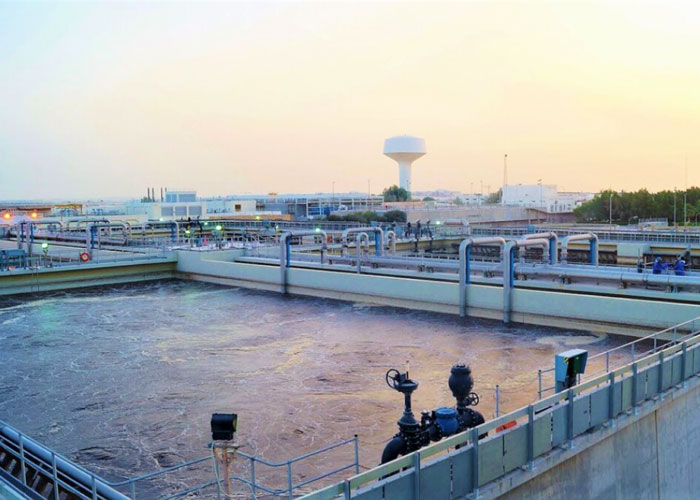The process for treating wastewater from municipal gardens uses a combination of processes. These include trickling filtration, secondary treatment, and activated sludge. The process of trickling filtration is the most common and environmentally friendly. The process is simple and efficient and can be applied to most municipal gardens.
Depending on the location of your home, you might have to purchase an STP to handle your sewage. Generally, residential buildings need at least one STP to treat sewage. Many STPs are located underground, making them difficult to maintain. Moreover, you may not be able to inspect them without hiring an expert. It is better to consult a professional if you have any doubts about the process.
Secondary treatment
Secondary treatment of wastewater produced in municipal gardens is an important step to reduce the amount of pollutants that get into the water. It involves removing the majority of pollutants from water, which is then sent to the treatment plant for further treatment. Secondary treatment involves the use of biological processes to remove up to 85% of the pollutants. Common techniques include trickling filters and activated sludge. Both processes create conditions for the growth of helpful microorganisms that consume most of the waste material. These microorganisms settle out of the treated water in secondary tanks and clarifiers.
Wastewater treatment for municipal gardens involves biological processes that remove organic matter and suspended solids. The most common secondary treatment methods use aerobic bacteria to break down the organic components of the wastewater. Other systems use decomposing bacteria or fixed film systems. Biosolids produced by these processes are useful fertilizers.

Secondary treatment of wastewater produced in municipal gardens involves applying wastewater intermittently over CW beds, usually raised above ground level. CW beds are typically planted with canna, cattails, and bulrushes, which absorb the excess nutrients and bacteria found in the wastewater. CW beds are a green solution to a problem. They help keep the area clean and healthy for both residents and wildlife.

Secondary treatment of wastewater produced in municipal gardens is a key step to protecting public health. The effluent from a treatment facility must meet a certain standard before it is released. This standard is required to prevent excessive algal growth in Nutrient Sensitive Areas under the Water Framework Directive and to kill pathogens near bathing waters, upstream of drinking water abstraction, and in watercourses with European or international protection.
Activated sludge
Activated sludge is a biological process that breaks down the organic matter in wastewater. This process reduces the levels of nitrogen and carbon in the wastewater and removes nutrients. Activated sludge can be used for a variety of purposes.
The process of wastewater treatment begins with the initial process of disinfection. This step is crucial in protecting the health of residents and animals, especially children. The remaining water is then sent to huge aeration tanks for further treatment. The sludge is then treated and sent back to the environment. This process of treatment not only provides a clean environment but also prevents water pollution, a major cause of many diseases in humans and animals.
The process is simple and effective. The process works by injecting oxygen into the sewage liquor in a deep columnar tank. This tank may be up to 100 meters deep and is usually filled with sewage liquor. The oxygen rises to the surface, providing oxygen for the activated sludge biota. After the sludge has accumulated on the bottom of the tank, the liquid is separated into two parts: the supernatant and the sludge.
The process of using sludge as a renewable energy source has several advantages. In addition to reducing pollution and producing renewable energy, it also reduces the need for fossil fuels. Activated sludge is able to capture methane, which would otherwise be a major contributor to climate change. By using methane-rich biogas as energy, sewage treatment plants can produce energy while minimizing their reliance on fossil fuels.
Trickling filtration
Trickling filtration is a common way to treat wastewater produced in municipal gardens. The process involves applying a large amount of organic material, such as crushed stone, to the filter media. It is used in combination with other treatment processes to reduce the load on the filtration media. Trickling filters can process wastewater up to 200 lb BOD per thousand cubic feet of media per day. In addition, trickling filters can be used to treat industrial discharges. The filtration media used in trickling filters is either fieldstone, crushed stone, slag, plastic, or redwood slats.
Trickling filters are suitable for areas where large tracts of land are not available. These filters can also treat wastewater with high concentrations of organic matter. The trickling process works by dispersing wastewater over a filter, where organisms suck out the organic matter.
Trickling filters have a long history and have earned a good reputation as reliable wastewater treatment technology. They are especially suited for small to medium-sized municipalities. Here, we will discuss some of the advantages and disadvantages of this filtration process. The advantages of this process include its small footprint, low cost, and good organics removal.
Trickling filtration is an economical treatment option for small to medium-sized communities. The process is suitable for reducing soluble BOD in wastewater. However, it requires a moderate level of technical expertise. Additionally, Trickling Filters can accumulate excess biomass, which can impair their performance. The maximum biomass thickness will depend on the type of media used and the hydraulic dosage rate. Its limitations include a high risk of clogging and limited capacity compared to other processes, such as activated sludge.







































Share Post